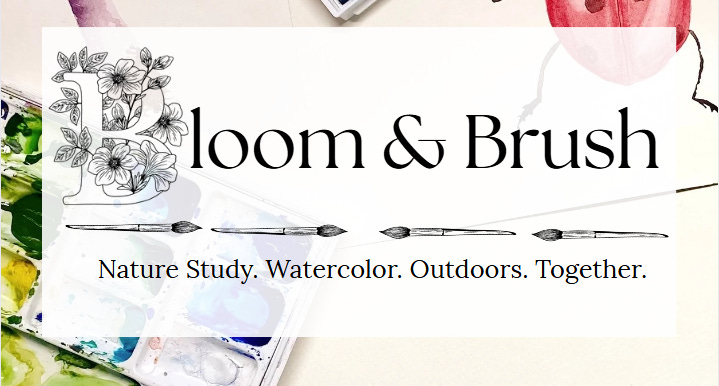"The child must not be left to discover everything for himself; his mind must be prepared in some measure for what he is to see and observe. It has been well said that the previous history of the mind determines the impression which the sight of any object is to make. ‘We can only see what we have been trained to see.’"- The Parents' Review, 1903, "How to Best Study Nature" by Mr. J. C. Medd, M.A.
When I started my homeschooling journey sometime around 2009, my mom sent me copies of For the Family’s Sake and For the Children’s Sake by Susan Schaeffer Macaulay. It was through these books that I discovered and adopted the philosophy of Charlotte Mason. Mason’s ideas about educating a whole person were like a soothing balm to my soul. How did I miss that true learning involves the things that I find engaging in the world? Why had I fallen into the trap of chasing academics alone? I am so grateful and forever indebted to the unmarried schoolteacher, Charlotte Mason. Her life’s work was to be a student of the ways of children, watch how they learn, seek out the very best for them and then, share what she learned.
The study of nature is one of the habits that sets apart the Charlotte Mason method from other literature-based or classical educational philosophies. I have done my best to get my children out-of-doors (as Mason puts it) with great regularity. We have lived most of our parenthood in subdivided neighborhoods with two glorious years spent in a farmhouse and then in a house in the woods. I know that it is much easier to get outside and explore nature when there is a generous feast just beyond the kitchen window calling to me. We are once again living in a subdivision, and I’ve had to develop some tools to help me continue getting our children introduced to nature so that they too will be able to call the trees, flowers and birds by name, so that they will know they are friends.
As a small child, my family spent two years living on one acre squished between a herd of cattle beyond one fence and a circus horse and pony on the other. It was in this home that I was able to see my first bird’s nest and chrysalis, and I became intimately acquainted with the daffodil, which remains my favorite flower to this day. I’m sure I watched some Sesame Street while living there, but my most vivid memories are of my time spent exploring our country acre.
During times of stress, loneliness and upheaval, I’ve always found restoration and solace in nature — be it animals, birds, trees or flowers. They seem to remind me of God’s unchanging stability. They help me remember how small I am and how vast God is. Such comfort and joy. I credit much of this love and intimacy with nature to my mother’s love of it herself and getting to spend unscheduled time out in it as a young child.
As Anna Comstock poetically describes in Handbook of Nature Study:
“Nature-study cultivates in the child a love of the beautiful; it brings to him early a perception of color, form, and music. He sees whatever there is in his environment, whether it be the thunder-head piled up in the western sky, or the golden flash of the oriole in the elm; whether it be the purple of the shadows on the snow, or the azure glint on the wing of the little butterfly. Also, what there is of sound, he hears; he reads the music score of the bird orchestra, separating each part and knowing which bird sings it. And the pattern of the rain, the gurgle of the brook, the sighing of the wind in the pine, he notes and loves and becomes enriched thereby.”
And we all sigh collectively and agree, that YES, this is what we want to learn to sense, experience and even express if it is in our ability to do so. Even if we have just a small bit of this level of love and intimacy with nature, we and our children will be certainly closer to what God created us as humans to be and experience from life.
So, what is nature study exactly? Why is it worth interrupting my school day in order to be sure it gets done? How should I get started? What is involved? Do I really have to read about the subjects we are studying each term? Why should I plan out our nature studies? Can’t I just learn about things as we go?
Let’s explore these questions and see if we can find a few helpful answers. I am passionate about introducing children and their grown-ups to nature. I also enjoy finding ways to make things simple so that I will actually do them. “A goal without a plan is just a wish,” penned French writer Antoine de Saint-Exupéry. So, if nature study is your goal, I will reveal a modest plan to help you and your children not only begin studying nature together, but also start a nature journal and hopefully, make the study of nature a habit that you and your children will make your own and enjoy freely. That is what has happened in our home, and it is my prayer that it will happen in yours!
“The world is so full of a number of things, I'm sure we should all be as happy as kings.” - Robert Louis Stevenson
I’ll be sharing more about nature study here in the coming weeks. If you want more help for your nature study work, I’m pleased to announce that I’ve created an online course to help you gain confidence with your brush drawing and nature study work! The two go hand-in-hand! Learn more about the Bloom and Brush course here!



